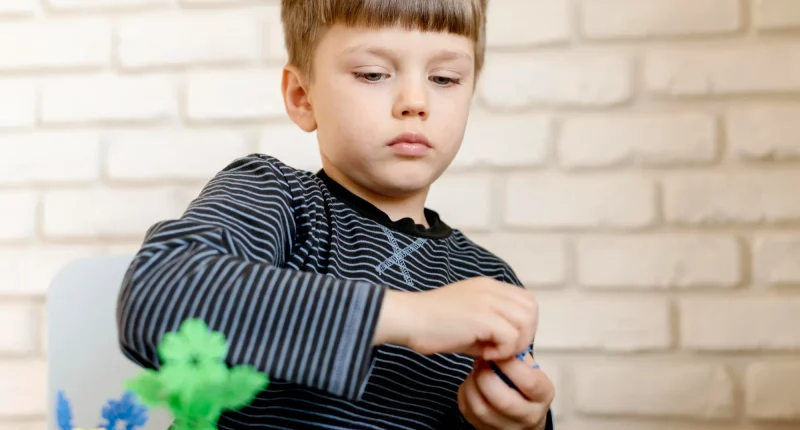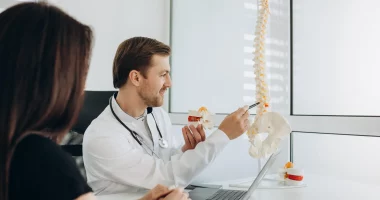ADHD makes it hard to focus, control energy, and stop yourself from doing things impulsively. In the United States, about 8.4% of kids and 2.5% of grown-ups have ADHD. Sometimes, signs of ADHD start when a kid is as young as 3 years old.
To help with ADHD, there are different treatments like taking medicine, learning how to manage behavior, and using other helpful methods.
ADHD makes it tough for people to concentrate on tasks and pay attention. This can make doing things like finishing schoolwork or projects really hard. It can also make it tough to focus at work or while studying. Dealing with ADHD can lead to feeling stressed out, worried, or sad.
Some folks with ADHD also struggle to stay still. They might do things without thinking and get distracted easily.
Even though lots of kids can get distracted or act impulsively sometimes, it’s more common and noticeable in kids with ADHD.
Features of ADHD
ADHD may grow in three ways:
- Impulsive presentation and predominantly hyperactive
- Predominantly inattentive presentation
- Combined presentation
Individuals with ADHD experience varying degrees of hyperactivity, impulsivity, and inattention.
Inattention
Here are some behaviors connected to inattention in ADHD:
- Daydreaming frequently
- Getting easily distracted and struggling to stay focused on tasks
- Making careless mistakes
- Appearing inattentive when others are speaking
- Struggling with time organization and management
- Frequently misplacing everyday items
- Avoiding tasks that require sustained concentration
- Struggling to follow instructions
Hyperactivity and impulsivity
In ADHD, few or all of the following behaviors may be noticeable:
- Always appearing “on-the-go” and unable to sit still
- Climbing or running at inappropriate times
- Struggling to take turns in activities and conversations
- Tapping or fidgeting or hands or feet
- Talking excessively and making unnecessary noises
- Engaging in unnecessary risk-taking
In Adults
Both children and adults with ADHD tend to experience similar symptoms, which can lead to difficulties in relations and at work. The effects of these symptoms can vary widely from one person to another, and a person’s experience of ADHD may change over time. Not all individuals with ADHD are disruptive or noisy; for example, a child can be calm in class while still facing significant challenges.
In Females
Females with ADHD are more likely to struggle with paying attention, whereas males tend to exhibit more impulsivity and hyperactivity. This difference might lead to more males being diagnosed with ADHD, as hyperactivity is often more noticeable than inattention.
Diagnosis
Children with ADHD are usually diagnosed during their elementary school years, although some may not receive a diagnosis until they reach adulthood.
Diagnosing ADHD isn’t straightforward, as there isn’t a single test for it, and its signs can resemble those of other conditions, making it tricky to pinpoint.
To reach a diagnosis, a healthcare provider will conduct thorough tests to check other potential causes, like vision or hearing issues. Additionally, they’ll consider conditions such as anxiety, depression, learning disabilities, and sleep disorders, which can present similar behaviors.
Gathering information from various sources is crucial. This includes speaking with the individual, their family members, caregivers like teachers, to understand the person’s behavioral patterns better.
While many children exhibit inattention and hyperactivity, an ADHD diagnosis requires that the symptoms meet particular criteria, significantly impacting daily life and school performance.
Treatments
Managing ADHD involves a variety of strategies, tailored to the individual’s needs through collaboration with a doctor.
Behavioral therapy and counseling can assist in developing essential skills such as relationship-building, rule-setting, task planning, schedule-following, and monitoring symptoms. Therapists may also provide guidance to parents on responding constructively to ADHD-related behaviors.
Specific interventions for ADHD may include stress management techniques, classroom behavior strategies, cognitive behavioral therapy (CBT), and family therapy.
CBT, in particular, helps individuals develop new approaches to handling daily situations and reactions.
Tips for Supporting Children and Adults
Teachers, parents, and others who care for children can assist them deal with the challenges of ADHD.
Frequently, schools have special plans to help kids with ADHD, like different ways of teaching, changes in the classroom, and talking with a counselor at school.
At school and at home, there are things you can do to make it easier:
- Make a list of everything that needs to be done.
- Break big tasks into smaller ones that are easier to handle.
- Keep school stuff and toys organized.
- Have clear rules that you stick to.
- When kids finish tasks, praise them or give them a reward.
- Use a planner that everyone checks often.
It’s also important to encourage kids to do things they enjoy and are good at. This can help them feel good about themselves. Exercise and sports are great for using up extra energy and making kids feel better overall.
Grown-ups with ADHD can use reminders like alarms and notes, as well as planners and calendars, to help keep track of their schedules.
It’s also helpful to have specific places for important things like keys, so you always know where to find them.
Medications
Certain medications, like stimulants, can be helpful in improving attention and focus for individuals with ADHD. Examples of stimulant medications include Adderall (amphetamine/dextroamphetamine), Vyvanse (lisdexamfetamine), Ritalin (methylphenidate), and Dexedrine (dexamphetamine). However, these medications can sometimes cause unwanted side effects.
Some common adverse effects of stimulant medications include lower stomach pain, headaches, increased heart rate and blood pressure, heightened irritability and anxiety, difficulty sleeping, decreased appetite, and changes in personality. To minimize the risk of experiencing these side effects, it’s important to inform the doctor about any other medications being taken and any existing health conditions.
If stimulant medications are not effective or suitable for an individual, the doctor may consider prescribing nonstimulant medications. Examples of nonstimulant medications include Intuniv (guanfacine), Strattera (atomoxetine), and Catapres (clonidine). In some cases, a doctor may recommend using one of these nonstimulant medications in combination with a stimulant to better manage ADHD symptoms.
Causes and Risk Factors
While the exact cause of ADHD remains unknown, certain risk factors have been identified by doctors. These include:
- A family history of ADHD
- Brain trauma
- Exposure to alcohol, tobacco, and stress during pregnancy
- Exposure to environmental contaminations during pregnancy or early childhood
- Low birth weight, as indicated by a 2018 meta-analysis
- According to a 2018 study, possibly preterm birth
Outlook
Attention Deficient Hyperactivity disorder is a mental health condition that can make things like school, work, and home life tough. It often starts when someone is a kid.
People with ADHD don’t just “grow out of it,” but they can learn ways to deal with it and still live a good life.
Without treatment, like medicine, someone with ADHD might feel bad about themselves, get sad, and have trouble at school, work, and with friends.
If you think a child might have ADHD, it’s important to talk to a doctor.
Counselors, teachers, and others who support a child can help them handle their symptoms and make the most out of their opportunities.
Summary
Medications like stimulants, such as Adderall and Ritalin, can aid in improving attention and focus for ADHD. However, they may cause side effects like headaches and increased anxiety. It’s crucial to inform the doctor about any ongoing medications and health issues to minimize risks. If stimulants aren’t effective or suitable, nonstimulant medications like Intuniv and Strattera may be prescribed. Sometimes, a combination of stimulant and nonstimulant medications is recommended for better management of ADHD symptoms.









